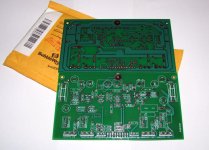@Evette
@pinnocchio
Would you be in a position to attend this event and demo the SYMEF? Lets take Canada
http://www.diyaudio.com/forums/club...uver-island-diyfest-2012-a-7.html#post3012136
@pinnocchio
Would you be in a position to attend this event and demo the SYMEF? Lets take Canada
http://www.diyaudio.com/forums/club...uver-island-diyfest-2012-a-7.html#post3012136
Nico, thank you for the support you gave at the beginning. I think going all the way will ease your suffering. Remember, there is still that dance  .
.
Lets watch the data come in and see whether we can draw a conclusion on the formula
It is what it is.............if it fails.......well we learn something. If it proves to be more than magic beans...............we learn something too.
Lets watch the data come in and see whether we can draw a conclusion on the formula
It is what it is.............if it fails.......well we learn something. If it proves to be more than magic beans...............we learn something too.
You see Nico, the wonderful volunteers who have constructed this amplifier and posted results are not to be taken lightly. I do not think they are easy to please. Their ages, tastes in music and equipment varies. Yet so far the formula has scored 100%
Thanks again Drowranger for your expertise in laying out a PCB in one plane and the massive amounts of effort on the PCB. etc etc
Thanks again Drowranger for your expertise in laying out a PCB in one plane and the massive amounts of effort on the PCB. etc etc
and also to you...
well this thread will not easily go down .I'm still wondering why this amp. sounds better than optimos
.I'm still wondering why this amp. sounds better than optimos well according to my taste. Optimos have a very clear highs and mids but symef have a very good mids in combination with lows with having a supply of 50v., while optimos, using supply of 72 volts.may be its the tripple output of Symef.
well according to my taste. Optimos have a very clear highs and mids but symef have a very good mids in combination with lows with having a supply of 50v., while optimos, using supply of 72 volts.may be its the tripple output of Symef.
What really inspires me to make pcb is not most of R. Sloan amplifier have pcb layout and also I want to have a new layout of optimos using 85v.Yes I have done it using 4 pairs of lateral mosfet and surely it requires a massive heatsink.
I'm a big fan of R. Sloan and thought it is very hard to surpass his amplifiers.But SYMEF proved me wrong.Harrison is a brilliant engineer.As far as I know most of the amplifiers here fall in the category of class a, b, h,d and g.yes nothing new.
but what matters most is the techniques they have used to differentiate it from its class.
regards,
joel
well this thread will not easily go down
 .I'm still wondering why this amp. sounds better than optimos
.I'm still wondering why this amp. sounds better than optimos well according to my taste. Optimos have a very clear highs and mids but symef have a very good mids in combination with lows with having a supply of 50v., while optimos, using supply of 72 volts.may be its the tripple output of Symef.
well according to my taste. Optimos have a very clear highs and mids but symef have a very good mids in combination with lows with having a supply of 50v., while optimos, using supply of 72 volts.may be its the tripple output of Symef.What really inspires me to make pcb is not most of R. Sloan amplifier have pcb layout and also I want to have a new layout of optimos using 85v.Yes I have done it using 4 pairs of lateral mosfet and surely it requires a massive heatsink.
I'm a big fan of R. Sloan and thought it is very hard to surpass his amplifiers.But SYMEF proved me wrong.Harrison is a brilliant engineer.As far as I know most of the amplifiers here fall in the category of class a, b, h,d and g.yes nothing new.

but what matters most is the techniques they have used to differentiate it from its class.

regards,
joel
I'm still wondering why this amp. sounds better than optimoswell according to my taste.
Why don't you ask Homemodder or OnAudio himself (its his survey). By the time you understand the answer you will be in another level
have no basis...
first of all requires listenning test.they have to build first optimos and symef.Like I did.
regards,
joel
Why don't you ask Homemodder or OnAudio himself (its his survey). By the time you understand the answer you will be in another level
first of all requires listenning test.they have to build first optimos and symef.Like I did.
regards,
joel
If you pay for travel I'll go 
Unfortunately, I do not have the funds for this right now... Montreal is in the east of Canada and Vancouver in the west...
Would have been nice!
Do
Unfortunately, I do not have the funds for this right now... Montreal is in the east of Canada and Vancouver in the west...
Would have been nice!
Do
@Evette
@pinnocchio
Would you be in a position to attend this event and demo the SYMEF? Lets take Canada
http://www.diyaudio.com/forums/club...uver-island-diyfest-2012-a-7.html#post3012136
Any progress report ?
Delayed due to illness and hospital time. OK now, so ordering components.
Statistics
Over 60 boards were given out freely and are in circulation. Grab the remaining of this batch here http://www.diyaudio.com/forums/solid-state/212460-32-pcbs-available.html#post3020011
Over 60 boards were given out freely and are in circulation. Grab the remaining of this batch here http://www.diyaudio.com/forums/solid-state/212460-32-pcbs-available.html#post3020011
Heres suggested BOM
Amplifier
one of the parts can not be soused from DigiKey or Mouser
transistor 2N5401YTA is not readily available.
Can 2N5401G be used instead?
The difference is Frequency - Transition 300MHz vs 400MHz
Also what are the instructions on assembling this and setting the trim pot P1?
Thanks,
I
- Home
- Amplifiers
- Solid State
- SYMEF amplifier

